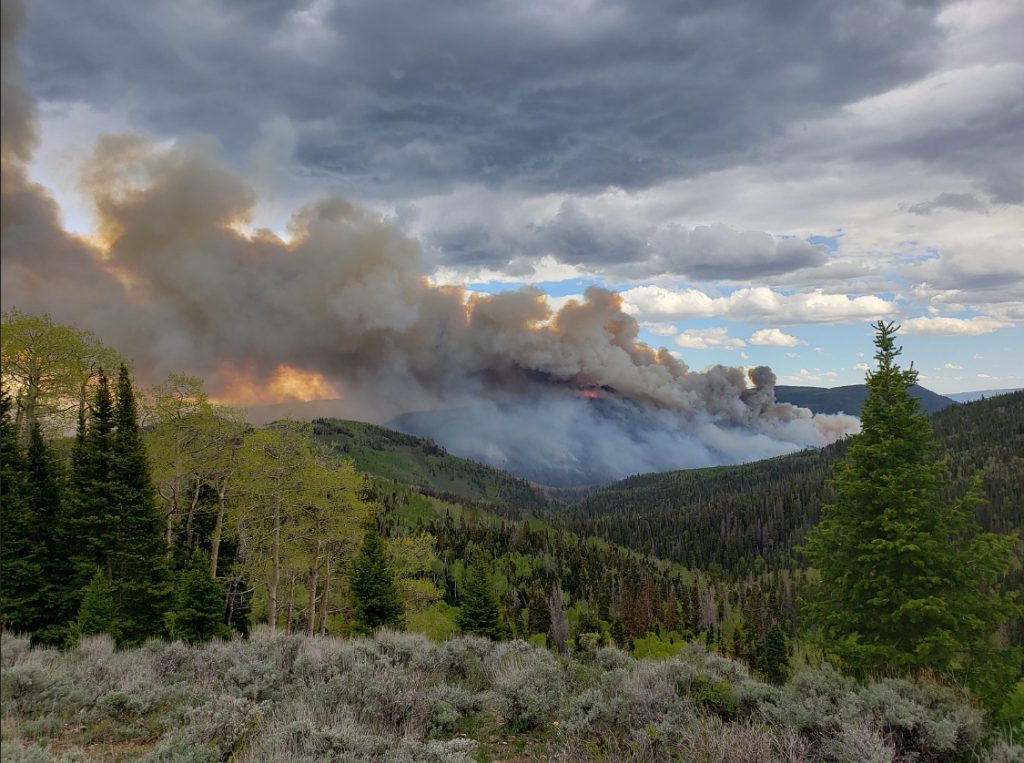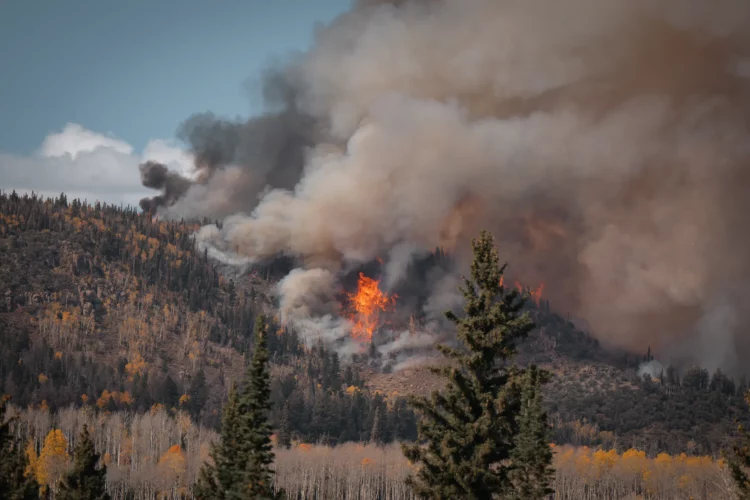Introduction
Wildland fires, also known as forest fires, bushfires, or grassfires, are a significant natural phenomenon that can have profound impacts on ecosystems, communities, and climate. As these fires become increasingly frequent and intense due to factors such as climate change and land management practices, understanding and managing them has never been more critical. NASA’s Wildland Fire Management Initiative represents a concerted effort to address these challenges using cutting-edge technology and scientific research. This article provides an in-depth look at the initiative, its goals, technologies, and the broader implications for fire management and environmental stewardship.
Understanding Wildland Fires
Wildland fires occur in natural landscapes such as forests, grasslands, and savannas. These fires can be ignited by natural causes like lightning or human activities such as campfires, discarded cigarettes, and arson. The impact of wildland fires varies based on the type of vegetation, weather conditions, and fire management practices.
1. The Role of Wildland Fires
Ecological Benefits
- Nutrient Cycling: Wildfires play a critical role in nutrient cycling. They help release nutrients trapped in vegetation and soil, promoting new plant growth and maintaining ecosystem health.
- Habitat Creation: Some ecosystems, such as certain types of forests and grasslands, rely on periodic fires to regenerate. Fires can create habitats for various species by clearing out old vegetation and creating space for new growth.
- Biodiversity: Wildfires can contribute to biodiversity by creating a mosaic of different habitats, which supports a diverse range of plant and animal species.
2. Negative Impacts
Property and Infrastructure Damage
- Residential Areas: Wildfires can threaten homes and infrastructure, leading to property loss and economic damage. In many cases, entire communities may be evacuated to protect lives and property.
- Economic Costs: The costs associated with wildfires can be substantial, including firefighting expenses, property damage, and the long-term recovery efforts required to rebuild affected areas.
Environmental and Health Concerns
- Air Quality: Wildfires produce large amounts of smoke and particulate matter that can degrade air quality. This can have serious health implications for people, especially those with respiratory conditions.
- Soil Erosion: The loss of vegetation due to fires can lead to increased soil erosion, which can affect water quality and contribute to flooding.
NASA’s Wildland Fire Management Initiative
NASA’s Wildland Fire Management Initiative is a comprehensive program designed to enhance the understanding and management of wildfires using satellite technology and scientific research. The initiative aims to improve wildfire monitoring, prediction, and response through innovative tools and techniques.
1. Objectives of the Initiative
Improving Fire Detection and Monitoring
- Satellite Observations: NASA utilizes its fleet of Earth-observing satellites to monitor wildfires in real-time. Satellites equipped with thermal imaging sensors and optical cameras can detect active fires, assess their intensity, and track their progression.
- Fire Detection Algorithms: Advanced algorithms and data processing techniques are employed to analyze satellite imagery and identify fire hotspots. These tools enhance the accuracy and speed of fire detection.
Enhancing Fire Prediction and Modeling
- Fire Behavior Models: NASA develops sophisticated models to predict fire behavior and spread. These models take into account various factors such as weather conditions, fuel types, and topography to forecast how fires will develop.
- Climate Data Integration: Integrating climate data into fire models helps in understanding how climate change influences wildfire frequency and intensity. This information is crucial for long-term fire management planning.
Supporting Fire Management and Response
- Decision Support Tools: NASA provides fire management agencies with decision support tools that help in resource allocation, evacuation planning, and firefighting strategies. These tools utilize satellite data and modeling outputs to inform decision-making.
- Collaboration with Agencies: NASA collaborates with federal, state, and local fire management agencies to share data and insights. This collaboration ensures that satellite observations and research are effectively used in fire response efforts.
2. Key Technologies and Tools
Satellite Technology
1. Landsat Satellites
- Overview: NASA’s Landsat satellites have been instrumental in monitoring Earth’s surface, including wildfires. The Landsat series provides high-resolution imagery that helps in assessing fire impacts and vegetation changes.
- Applications: Landsat data is used to monitor fire burn scars, track vegetation recovery, and analyze changes in land use. This information is valuable for post-fire assessment and land management.
2. MODIS (Moderate Resolution Imaging Spectroradiometer)
- Overview: MODIS is an instrument on NASA’s Terra and Aqua satellites that provides near real-time data on global fire activity. It captures thermal infrared imagery to detect active fires and monitor their intensity.
- Applications: MODIS data is used for global fire monitoring, early warning systems, and assessing the impact of fires on air quality and vegetation.
3. VIIRS (Visible Infrared Imaging Radiometer Suite)
- Overview: VIIRS is an instrument on the Suomi National Polar-orbiting Partnership (NPP) satellite and the NOAA-20 satellite. It provides detailed fire detection and monitoring capabilities with high spatial resolution.
- Applications: VIIRS data is used for fire detection, mapping fire hotspots, and monitoring fire progression. It helps in providing timely information for fire response and management.
Fire Modeling and Simulation Tools
1. Fire Emissions Production Simulator (FEPS)
- Overview: FEPS is a tool used to estimate the emissions produced by wildfires. It calculates the amount of smoke, greenhouse gases, and particulate matter released during a fire.
- Applications: FEPS data is used to assess the impact of wildfires on air quality and climate. It helps in understanding the environmental consequences of fire emissions.
2. Coupled Atmosphere-Wildfire Model (CAWFE)
- Overview: CAWFE is a model that simulates the interaction between the atmosphere and wildfires. It provides detailed predictions of fire behavior, smoke dispersion, and weather conditions.
- Applications: CAWFE is used for operational fire forecasting, smoke management, and understanding how fires influence local and regional weather patterns.
Collaboration and Partnerships
1. Working with Federal Agencies
NASA collaborates with various federal agencies involved in fire management, such as the U.S. Forest Service (USFS) and the National Interagency Fire Center (NIFC). These collaborations ensure that NASA’s data and tools are effectively integrated into fire management practices.
2. Engaging with International Partners
NASA also partners with international organizations and space agencies to share fire data and research findings. This global collaboration enhances the understanding of wildfires and improves response strategies worldwide.
3. Supporting Research and Innovation
NASA funds and supports research projects focused on wildfire science and technology. This includes developing new methods for fire detection, modeling, and management.

4. Public Outreach and Education
1. Raising Awareness
NASA’s Wildland Fire Management Initiative includes efforts to raise public awareness about wildfires and their impacts. This involves sharing information through educational resources, public presentations, and media outreach.
2. Providing Educational Resources
NASA develops educational materials and tools to help the public understand wildfire science and the role of satellite technology in fire management. These resources are used in schools, community programs, and outreach events.
Broader Implications and Future Directions
1. Climate Change and Wildfires
- Influence of Climate Change: Climate change is a major driver of increasing wildfire frequency and intensity. Rising temperatures, changing precipitation patterns, and prolonged droughts contribute to more severe fire conditions.
- Adaptation and Mitigation: Addressing the challenges posed by climate change requires adaptation and mitigation strategies. NASA’s research helps in understanding these impacts and developing strategies to manage and reduce wildfire risks.
2. Enhancing Fire Management Practices
- Integrated Approach: Effective fire management requires an integrated approach that combines technology, science, and policy. NASA’s initiatives contribute to this approach by providing valuable data and tools for decision-making.
- Improving Resilience: Building resilience in communities and ecosystems is essential for managing wildfire risks. NASA’s research supports efforts to enhance resilience through better fire prediction, response, and recovery strategies.
3. Advancing Technology and Innovation
- Future Technologies: Advances in satellite technology, data processing, and fire modeling continue to improve our ability to monitor and manage wildfires. NASA’s ongoing research and development efforts are at the forefront of these innovations.
- Expanding Capabilities: Future initiatives will focus on expanding the capabilities of existing tools and developing new technologies to address emerging challenges in wildfire management.
Conclusion
NASA’s Wildland Fire Management Initiative represents a critical effort to address the complex challenges posed by wildfires. Through the use of advanced satellite technology, fire modeling tools, and collaborative partnerships, NASA is enhancing our understanding of wildfires and improving management practices.
The initiative’s focus on improving fire detection, prediction, and response plays a vital role in mitigating the impacts of wildfires on ecosystems, communities, and the climate. By supporting research, advancing technology, and engaging with partners, NASA is contributing to a more comprehensive and effective approach to wildfire management.
As wildfires continue to pose significant challenges, NASA’s Wildland Fire Management Initiative provides valuable insights and tools that support efforts to protect lives, property, and the environment. Through innovation and collaboration, we are better equipped to understand and manage the complexities of wildfires and their impacts on our planet.


















































Discussion about this post